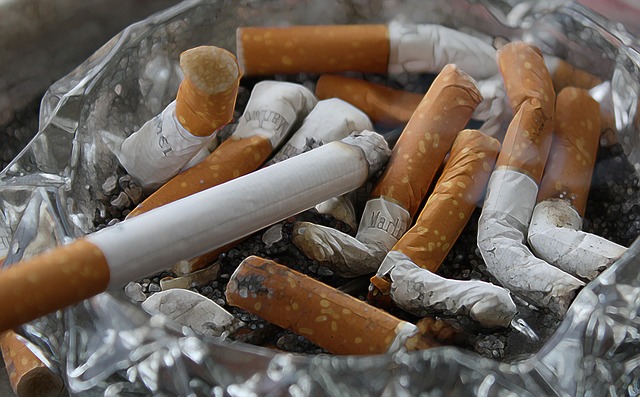Condensation in HVAC systems, caused by warm air meeting cooler surfaces, leads to mold and mildew growth if not managed properly. It's primarily driven by improper ventilation in enclosed spaces and can be exacerbated by inadequate heating/cooling, dirty filters, and insufficient insulation. Regular maintenance, including cleaning, inspection, adequate ventilation, humidity control, and correct filter use, is vital to prevent condensation and the spread of mold, creating a healthier indoor environment. Optimizing building humidity, monitoring ventilation, sealing leaks, and regular professional inspections prolong HVAC lifespan and mitigate health risks associated with mold. Act promptly if persistent condensation causes issues like musty odors or visible mold.
Preventing condensation in HVAC systems is crucial to maintaining indoor air quality, averting mold growth, and ensuring optimal system performance. This comprehensive guide delves into the causes of condensation formation within HVAC units, highlighting the link between condensation and mold proliferation. We offer effective strategies, from regular maintenance practices to expert intervention, to mitigate these issues. By understanding condensation dynamics, you can safeguard your space from potential health risks associated with both mold and excessive moisture, ensuring a comfortable and safe environment.
- Understanding Condensation in HVAC Systems
- Common Causes of Condensation Formation
- The Link Between Condensation and Mold Growth
- Effective Strategies to Prevent Condensation
- Best Practices for Regular Maintenance
- When to Seek Professional Assistance
Understanding Condensation in HVAC Systems

Condensation in HVAC (Heating, Ventilation, and Air Conditioning) systems is a common issue that can lead to various problems if left unchecked. It occurs when warm air, containing moisture, comes into contact with cooler surfaces within the system or the environment outside. This causes the water vapor in the air to condense, transforming into liquid water. While it might seem like a simple process, condensation in HVAC systems can result in significant issues, including the growth of mold and mildew if not properly managed.
The impact of condensation is far-reaching; it can damage building materials, reduce system efficiency, and create an unhealthy indoor environment. One of the primary concerns is the potential for condensation to foster the growth of mold and mildew, which can be harmful to both the structure of a building and the health of its occupants. Therefore, understanding how and where condensation forms within HVAC systems is crucial in preventing its adverse effects, especially considering the risk it poses to spreading mold if left unaddressed.
Common Causes of Condensation Formation

Condensation formation in HVAC systems is a common issue that, if left unaddressed, can lead to various problems, including the growth of mold. Understanding the common causes behind this phenomenon is the first step towards effective prevention. One primary factor is improper ventilation, especially in enclosed spaces with limited air circulation. When warm, humid air from outside enters a building and comes into contact with cooler internal surfaces, it loses moisture faster, leading to water droplets condensing on windows, walls, or even HVAC components. This process can create the perfect environment for mold growth if not managed properly.
Another significant contributor is inadequate heating or cooling of spaces. If certain areas within a building remain unheated or poorly cooled, they may act as condensation hotspots. Cold surfaces in these zones can accelerate water vapor condensation, especially during seasonal transitions when outdoor temperatures fluctuate. Moreover, dirty or faulty air filters, as well as inadequate insulation, can exacerbate the problem by restricting airflow and creating conditions conducive to moisture buildup.
The Link Between Condensation and Mold Growth

Condensation in HVAC systems is a complex issue, but it’s closely linked to another significant problem: mold growth. When moisture condenses on cold surfaces within an HVAC system, it creates ideal conditions for mold spores to thrive and multiply. These spores can then disperse throughout a building’s air handling system and settle on various surfaces, leading to unsightly stains, unpleasant odors, and potential health risks for occupants.
While HVAC systems are designed to circulate and regulate indoor air, proper maintenance is crucial to prevent condensation. Regular cleaning and inspection can help identify and address wet or moldy areas within the system. Additionally, ensuring adequate ventilation, controlling humidity levels, and using appropriate filters are essential strategies to mitigate condensation and the subsequent risk of mold growth, thereby promoting a healthier indoor environment.
Effective Strategies to Prevent Condensation

To effectively prevent condensation in HVAC systems, several strategic approaches can be employed. Firstly, maintaining optimal humidity levels within the building is key. Using dehumidifiers or efficient air conditioning units helps control moisture content in the air, thereby reducing the chances of water vapor condensing on cold surfaces. Regular monitoring and adjustment of humidity settings ensure a comfortable environment that isn’t conducive to mold growth.
Additionally, proper ventilation plays a crucial role. Ensuring adequate airflow throughout the system prevents hot spots and promotes even heating or cooling. This reduces temperature variations where condensation can occur. Sealing leaks and improving insulation further contribute to maintaining consistent temperatures, minimizing areas where moisture can accumulate. Remember, by preventing condensation, you not only extend the life of your HVAC system but also create a healthier indoor environment, avoiding potential issues like mold growth that can be exacerbated by excess moisture.
Best Practices for Regular Maintenance

Regular maintenance is key to preventing condensation and its associated issues in HVAC systems. A well-maintained system runs more efficiently, reduces energy costs, and minimizes the risk of mold growth, which can be a severe health concern. It’s essential to follow best practices such as cleaning or replacing filters regularly, as dirty filters can lead to increased moisture buildup. Inspecting and sealing ductwork for leaks is another crucial step; sealed ducts prevent warm air from escaping and cold air from entering, reducing the likelihood of condensation.
Professional inspections are beneficial to identify potential problems early on. Technicians can check for any signs of water damage or mold growth within the system and offer tailored solutions. Additionally, maintaining optimal humidity levels in your space is vital; excessive moisture in the air can contribute to condensation. Regular maintenance and proper humidity control go hand in hand to ensure a healthy and efficient HVAC system.
When to Seek Professional Assistance

If you notice persistent condensation in your HVAC system, or if it’s causing issues like musty odors, it’s crucial to act promptly. While some minor problems can be addressed with simple DIY solutions, such as improving ventilation and maintaining optimal humidity levels, more complex issues may require professional intervention.
Condensation can indeed lead to mold growth, a health hazard that requires specialized knowledge and equipment to assess and mitigate. Professional HVAC technicians have the expertise to identify the root cause of excessive condensation, whether it’s due to inefficient ductwork, improper system sizing, or underlying structural problems. They can offer tailored solutions, from sealing leaks and improving insulation to replacing faulty components, ensuring a safe and comfortable indoor environment.
